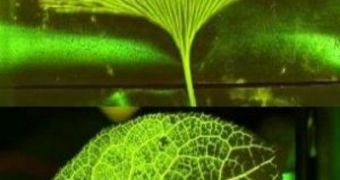Experts looking into boosting the efficiency of all sorts of systems, ranging from production lines to spreading advertising, know that a straight line between two points is not always the most effective or reliable delivery system for data or products. A new scientific model shows that, in fact, the best possible route for a given application may run in circles, rather than in a straight line. This approach to looking at this type of issues summarizes a few decades of scientific theories that were proposed on the subject. The model was developed at the Rockefeller University, in the United States, by a team of biophysicists led by expert Marcelo O. Magnasco, ScienceDaily reports.
The new model basically draws the most efficient route between two points, not necessarily the shortest. The researchers drew inspiration from nature, and more specifically from the netted veins inside leafs. These networks are extremely well adapted to carrying various fluctuation loads to different parts of a system. Additionally, the team says, such a network is best suited to withstand damage from external sources. Its intricate, looped design allows for it to redirect “traffic” going on through it, so as to minimize the effects that the damage would otherwise have made.
This type of study could have considerable implications for various industries manufacturing and delivering products, for city authorities in determining the best possible way to deliver power and water to the population, for postal and delivery services, as well as for making traffic more fluid. This is very obvious in the leaves of more modern plants, such as lemons. Their transport network is not shaped like a tree, with progressively smaller branches leading away from the main tree. This approach, widely used by humans in practical applications, leaves the entire system vulnerable to attack.
If a section of the “tree” is cut, everything downstream from it starves to death. In the case of plants, bugs and bacteria would kill them immediately. Their “routing system” is so efficient, that water or nutrients flowing through it can make their way from any location to any destination, simply bypassing the block. Though this approach is more costly for the plant in terms of energy consumption, its potential benefits far outweigh the initial investment.

 14 DAY TRIAL //
14 DAY TRIAL //